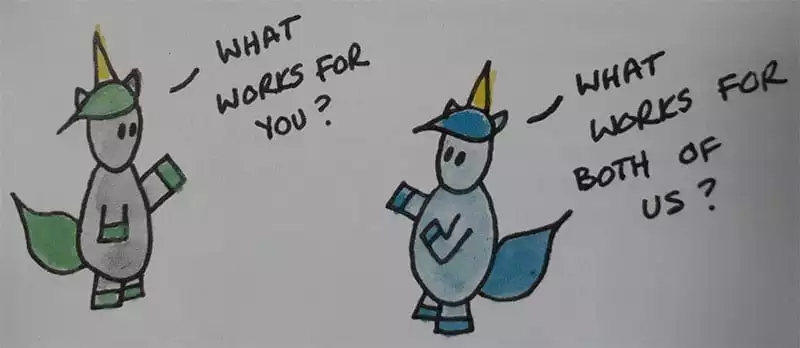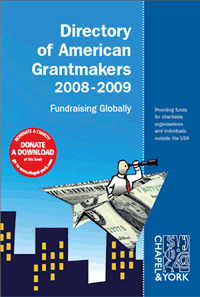Book review: Unicorns Unite – How non-profits and foundations can build EPIC partnerships
Through sharing the perilous highs and lows of working in the sector, this book is partly a rallying call for non-profits and foundations to work better together, and partly a workbook, stacked with useful tasks to help organisations move towards developing EPIC partnerships.
I love that this book is targeting both non-profits and foundations. It brings both perspectives and includes tasks for organisations to do individually and together, which I think is rare – and welcome. It’s worth noting that while it is American it is completely applicable to UK organisations.
It is fair to say that this book breaks the mould of non-profit books. Aesthetically, I love it: it is square, has lots of white space, is colourful, has ridiculous pictures of unicorns and the font is nicely spaced.
Advertisement
The tone of voice, is, erm, different. It purposefully doesn’t have an academic framework, but regardless of that, I haven’t come across any other non-profit book or journal that describes colleagues in the sector as “bad-ass people”, or that “Nonprofit work is difficult AF”. But I think we’ve all had days when we feel like this, so it’s nice for this to be acknowledged!
The basic premise is that we are all unicorns (magical because we work in the sector) and that we are part of the unicorn family. I have to admit that the unicorn family analogy was worrying; was it trying too hard to be quirky and cool? But by page 14 when unicorn family issues and dysfunction are explored, I’m in.
All the annoyances of non-profits and foundations are brought to light, not least how we categorise ourselves into these two ‘sides’, thus perpetuating the issue. One of the ways in which foundations ‘disappoint’ the unicorn family made me laugh out loud: they “have longer decision cycles than it takes to conceive
and give birth to a baby.”
As is, what could be, and how to get there
The structure of the book mirrors a strategy (Part 1: As is, Part 2: What could be, Part 3: How to get there) – it’s simple and straightforward. Importantly, the book tackles critical issues. It encourages organisations to talk about overheads and not minimise them; to value inputs beyond money; to actively acknowledge and address the power imbalance between non-profits and foundations, amongst other things.
There are lots of tools to help you to move towards EPIC* partnerships. My favourite is the first tool, which helps you audit your communication channels and remove or replace language which ‘reinforces the overhead myth’, i.e. don’t pretend that your overheads are something other than what they are. Another tool along these lines encourages you to set a timer for 60 minutes to replace your restricted asks with asks for operating costs wherever possible.

The book also highlights how partners can provide introductions and network on behalf of each other as well as suggesting and encouraging us to think of low resource methods for foundations to work with the high proportion of non-profits whose applications are unsuccessful. Crucially, the book encourages charities to ‘nudge’ their needs. Ask for what you need, even if that is uncomfortable or awkward; if we all ask for what we need, it will become expected and standard practice. Be the change you want to see!
There are great tips for foundations looking to support non-profits and to shift the power dynamics, such as holding meetings at the non-profit’s offices or within the local area, and asking a non-profit to edit their rejection letter.
I suspect that few people will use all the tools in the book, and some tools might be outside of the comfort zone for some, but adopting a couple will certainly help us as a sector in moving towards EPIC partnerships. Usefully, the book acknowledges that organisations might not have the time or inclination to throw themselves into all the tasks and provides options for if you only have an hour a month, or an hour a year.
This book is for anyone wanting to take a fresh look at how they work with their partners, be they non-profits or foundations. It provides the space (literally) for you to think and plan how you can work differently to improve your partnerships, and throws in a whole load of feel-good support for you too.
* EPIC stands for: Equally value all input; Prioritise needs of those we serve. Increase trust and empathy. Commit to big, bold, and better (all in teamwork!).
Unicorns Unite – How non-profits and foundations can build EPIC partnerships
Authors: Jessamyn Shams-Lau, Jane Leu, Vu Le
Published by Red Press Ltd, 2018
ISBN 978 1 912157 04 4
Reviewed by Beth Crackles, a consultant specialising in strategy, funding and projects. She has held strategy and income diversification roles with NCVO, Friends of the Earth, RNIB and Toynbee Hall. You can find her at bethcrackles.com or on Twitter at @bethcrackles.
![]()
![]()




